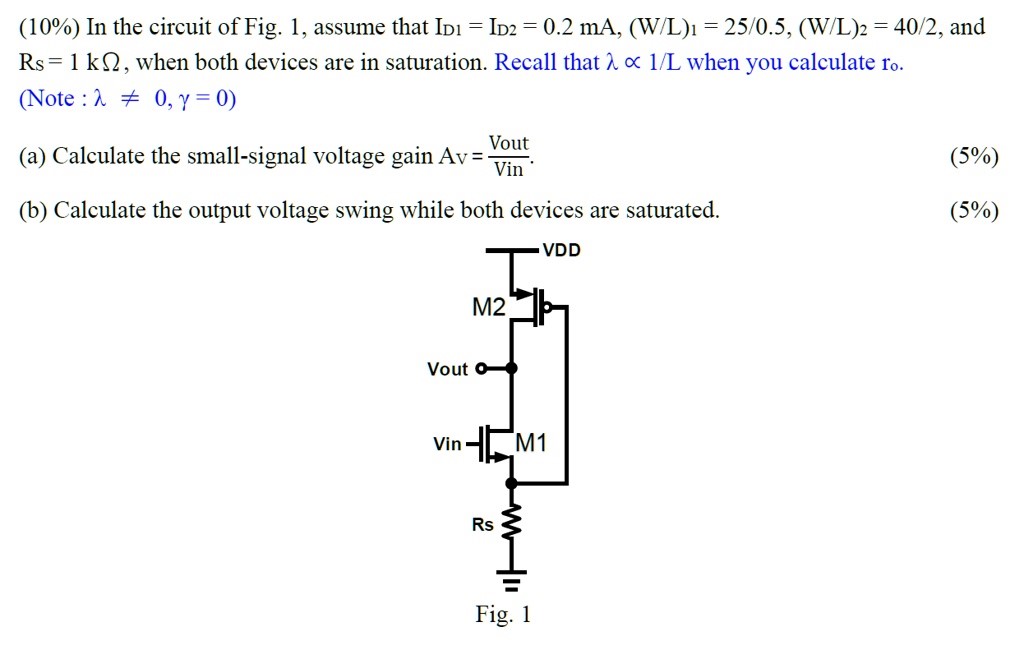(10%) In the circuit of Fig. 1 , assume that ID1 = ID2 = 0.2 mA, (W/L)1 = 25 /0.5, (W/L)2 = 40 /2, and RsS = 1 kΩ, when both devices are in saturation. Recall that λ∝1/L when you calculate ro. Note :λ≠0, γ = 0) (a) Calculate the small-signal voltage gain Av = Vout Vin . (b) Calculate the output voltage swing while both devices are saturated. Fig. 1
